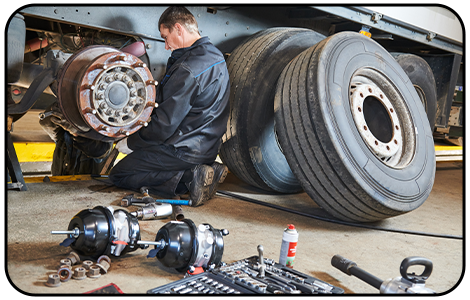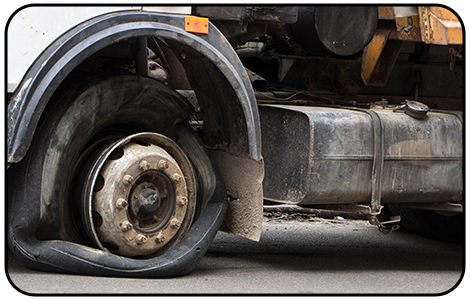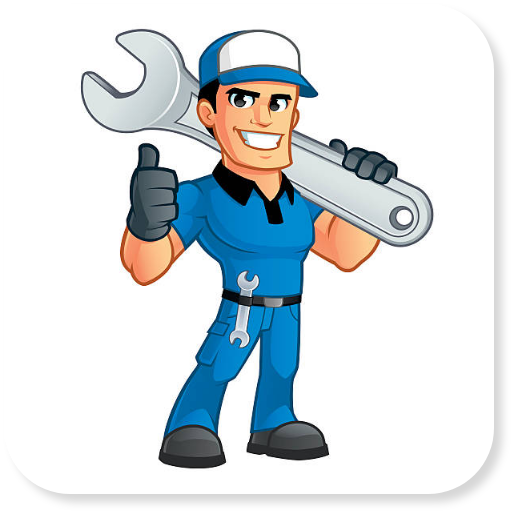
TIRE REPAIR AND REPLACEMENT FOR TRUCK AND TRAILER
Tire Care and Maintenance Poorly maintained tires frequently contribute to accidents on the road. Conducting an inspection before each trip is crucial; punctures and tire wear often lead to accidents due to loss of vehicle control. Inadequate tire tread reduces stopping ability, causing accidents during inclement weather. It is advisable to maintain proper air pressure and monitor tire wear, ensuring they are not dry or have cuts on the sidewalls. Keeping good balance, alignment, and ensuring the tires are not worn out will help achieve better performance and durability. This way, accidents involving innocent people can be prevented. Tire Safety and Inspection Tips: Truck drivers play a fundamental role in tire maintenance and safety; their actions can make the difference between a safe trip and facing consequences for not changing the tire. To ensure that tires are in safe driving condition, truck drivers should follow these practices:
1. Tire Condition: Tires should be thoroughly inspected before a trip. Check for air leaks, uneven wear, tread damage such as bulging, and inspect the sidewalls for cracks, dryness, or cuts. All nuts should be firmly tightened.
2. Check Tread Depth: Regularly measure tread depth with a depth gauge to ensure tires meet FMCSA minimum standards. If the tread is worn and does not meet the required measurements, the tire should be replaced immediately. According to the Federal Motor Carrier Safety Administration (FMCSA) regulations, "the minimum tread depth for a steering tire is 4/32 of an inch in every groove." 3. Air Pressure: Drivers should check the air pressure daily before starting a trip. Low air pressure causes accidents, blowouts, and fires, among other issues. Additionally, tires inflated below the manufacturer’s specifications can result in an "out of service" violation.
4. Check the Manual or Door Sticker: Every commercial vehicle has a sticker on the driver’s door with information about how much air each Steer and Drive tire needs.
5. Inspect Between Dual Tires: Ensure there are no hidden damages or foreign objects lodged between the dual tires, particularly in the rear traction tires. Make sure the tires are not rubbing against each other, which could cause an "out of service" violation.
6. Check Valves: It is very important to inspect the condition of the valves, ensuring they are not bent, broken, or leaking air, and that they have their caps.
7. Report Damaged Tires Immediately: If a tire defect is detected, it should be reported immediately and the tire should be repaired or replaced. If the damaged tire violates Part 393.75, it is better for the truck driver to stop in a safe place and have roadside repair service perform the repairs or replace the tire with a new one.
8. Drive Carefully: While driving, avoid hitting the curb, crashing into a rock, driving over a lot of debris, or speeding through potholes. If any of these events occur, find a safe place to inspect for any damage.
9. Damaged King Pins: These can cause premature tire wear; check that the tire does not have excessive play to avoid on-road repairs.
10. Check Shock Absorbers: Worn shock absorbers on a truck can damage the tire because excessive bouncing reduces road grip, causing accelerated tire wear and bumps in the middle of the tire.
Tire maintenance and care will not only keep you safer on the road but also help you avoid fines, improve fuel efficiency, and extend the life of your tires. We hope these tips help you get more out of your tire maintenance




